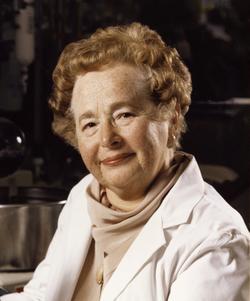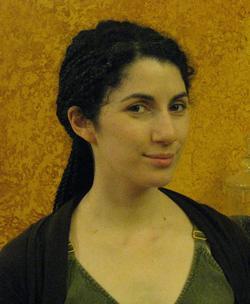Scientists
Great scientists search for answers to the problems of their era, and the solutions often come from looking at those problems from a new angle. This is also true for the “problem” of women scientists, who have spent decades overcoming hurdles of sexism only to be told that the fact that there are so few women working in STEM fields is not a sign of prejudice but proof that they lack the innate skills for the work. Part of the solution has come from the slow, frustrating work of ensuring women have the same opportunities as men, but part has come from challenging the problem from a different angle: women who sidestep the question of whether they have the right (or the talent) to be scientists and simply let the genius of their work attest to their abilities.
The impossible problem of Gertrude Elion’s era was cancer: at the time, a doctor’s only recourse was to cut out as much as they could and hope they got it all, and there was no solution for leukemia, since nothing could be cut away. After losing both her grandfather and her fiancé to cancer, Elion focused on the cutting-edge possibilities of chemotherapy.
While she earned her master’s degree in 1941, Elion couldn’t find a PhD program willing to accept her, and struggled for three years to find a lab that would hire her for serious, challenging work before the Burroughs Wellcome lab gave her a job as a research chemist. When she finally entered a PhD program, she was soon forced to choose between devoting time to a degree or her practical lab work. She abandoned her studies to keep doing the research she was passionate about, knowing that if she left, she might never find another such job again. While she won the Nobel Prize in 1988, she never earned her doctorate.
Despite these early challenges, Elion made groundbreaking medical discoveries at Burroughs Wellcome that transformed how we treat cancer, including the first effective uses of chemotherapy to treat leukemia. She went on to find ways to help fight rejection of organ transplants, and lay the groundwork for AZT, the first effective AIDS therapy. After the death of her mentor George Hitchings, Elion became the head of the lab at Burroughs Wellcome. Elion passed on the support she’d gotten from Hitchings by mentoring younger scientists, making sure they got full credit for their work in published papers and ensuring that the women who followed her would have fewer hurdles to overcome.
Nina Fefferman’s passion for math and science flourished early: in middle school, she was already auditing classes at Princeton University. But her interests are wide-ranging, incorporating her training as both a mathematician and a biologist, as well as her fascination with social systems—both human and animal. After earning her PhD in 2004, she began teaching at Rutgers University. By thirty, Fefferman was running her own lab. Her focus is familiar to anyone in the digital age: the problems (and benefits) of interconnectivity. Using mathematical and computer models to track and predict group behavior, Fefferman can help determine better ways for emergency services to contain and treat epidemics. But her work is incredibly varied; over the past six years, she’s overseen projects finding solutions for the sudden collapse of bee colonies and helping save endangered species like sea turtles.
In 2010, Fefferman gave a TED talk that expressed her passion for infectious diseases and how insects’ social behaviors offer us possibilities for combatting epidemics in human societies. In the same talk, she described how a computer virus that spread through the online game World of Warcraft inspired a new research project for her lab. Fefferman’s decision to incorporate all her interests—from complex mathematical models to video games—into her work not only keeps her energized, it gives her a wider array of tools to uncover new solutions to problems.
While women working in science and technology still face prejudice from male colleagues, Fefferman describes it as “no longer a glass ceiling so much as a completely penetrable toxic haze—you can get through it, but it’s really annoying and if you give up, it’s seen as evidence that women really don’t want to be scientists after all.” For Fefferman, the struggle is absolutely worth it.




